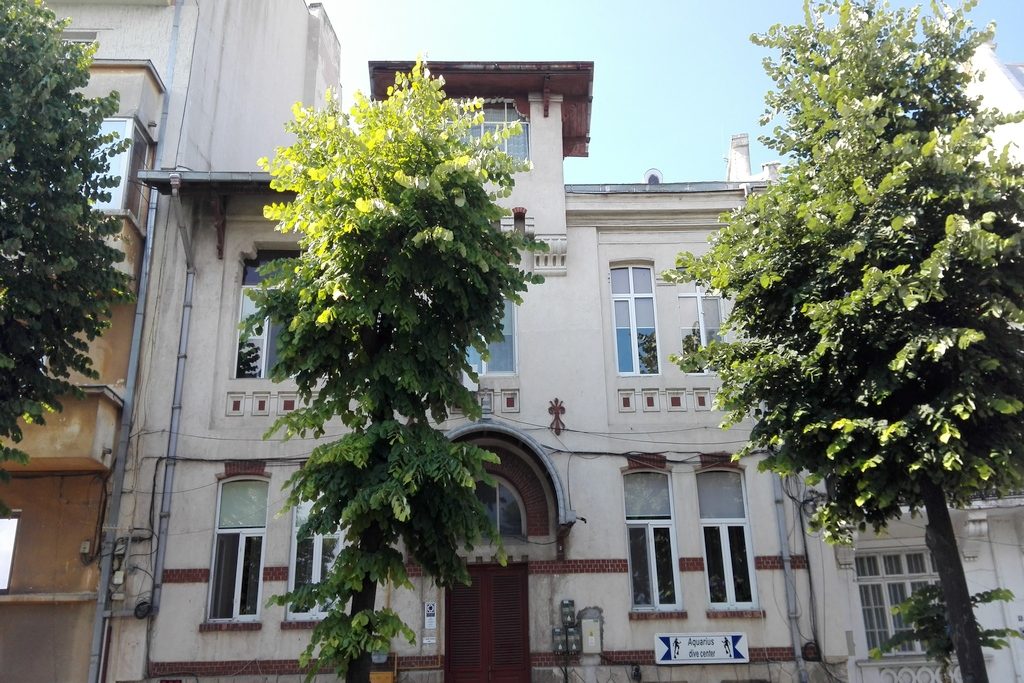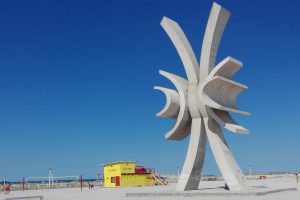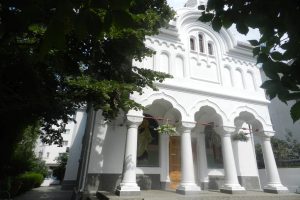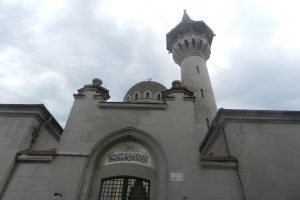

The building stands out through the combining of the Romantic elements with the brâncovenești.
A special characteristic is represented by an exterior mansard which has as support consoles (decorating romantic elements).
The brâncovenești elements are presented by the belt of apparent brick.
The construction plans of the immobile have been inspired by the projects belonging to Anghel Saligny. The owner, the engineer Ion Pâslă, who had the occupation of general inspector of the harbor.
The house built by him in 1904 with a height regime of basement/ground floor/first floor and has a simple composition, balanced with a façade in three parts of the construction, having in the central ax a fireplace which raises over the 1st floor.
Ion Pâslă was an engineer and was involved in the construction of the Bridge from Cernavodă. The entire construction site was under the permanent supervision of Anghel Saligny and of his collective reunited around him, of whom there were part some of the most valuable engineers of Romania of the end of the XIXth century: Ion Baiulescu, N. Herjeu, Şt. Gherorghiu, Ion Pâslă, Ion I.C. Brătianu, Ion Ionescu, Victor Cristescu, all graduates of the construction universities from Vienne and Paris and of the National School of Bridges and Roads from Bucharest.
In the apartment from 9 Elisabeta Blvd. there also lived the engineer P.A. Zahariade. In the Saligny’s project fro consolidating the borders of the sea front from the Hotel Carol I until Tataia was seconded by the eng. P. A. Zahariade.
After the First World War, according to the meeting of the Town Council recorded in the archives of the City Hall, there has been decided to continue the consolidation of the borders and to build further on the coast highroad. Eng. Zahariade was also in the command of these works.
Constanța is one of the oldest cities certified on the territory of Romania. The first documentary certification dates back to the year 657 b. Chr. when, on the place of the current peninsula (and even under today’s waters, in front of the Casino) there was formed a Greek colony called Tomis. The locality was conquered by the Romans in 71 b. Chr. and renamed Constantiana after the sister of the emperor Constantin the Great. During the XIIIth century The great sea (as it was named back then the Black Sea) was dominated by the Italian merchant men from Genoa who helped at building up the city. Further on, Constanța suffered a decline under the Ottoman command, becoming a simple village lived by Greek fishermen and by Tatar horse and sheep breeders. The locality became again a city after the construction of the railway Cernavodă – Constanța and of the harbor, in 1865, for the export of the Romanian grains. After the Independence War (1877 – 1878), when Dobrogea became part of the Kingdom of Romania, Constanța, the principal port of the state, continuously grew, holding this role even in the present.
The Constanța harbor covers a surface of 39, 26 km2, has a length of almost 30 km, it is the biggest harbor from the Black Sea and it is situated on the 4th place in Europe.






